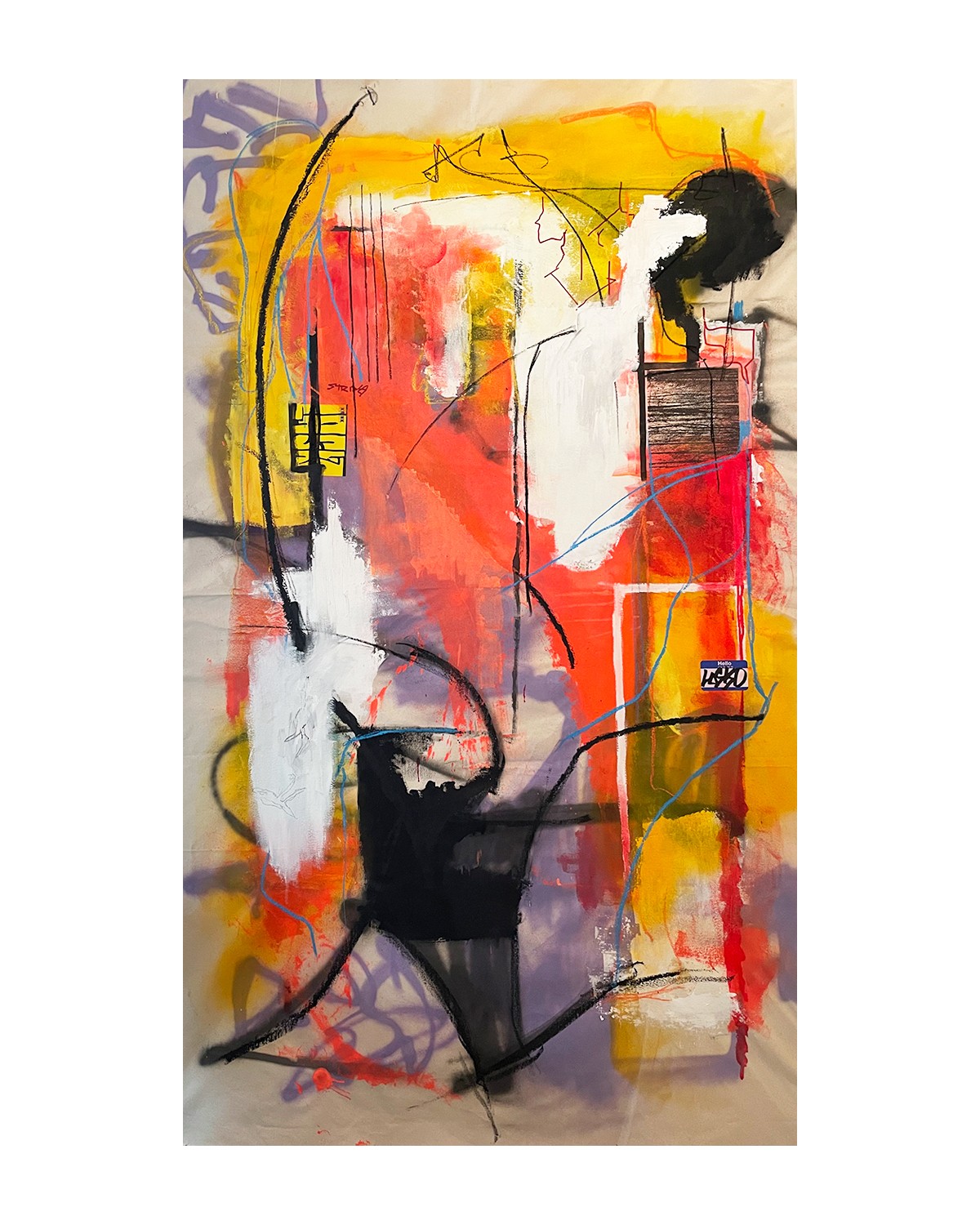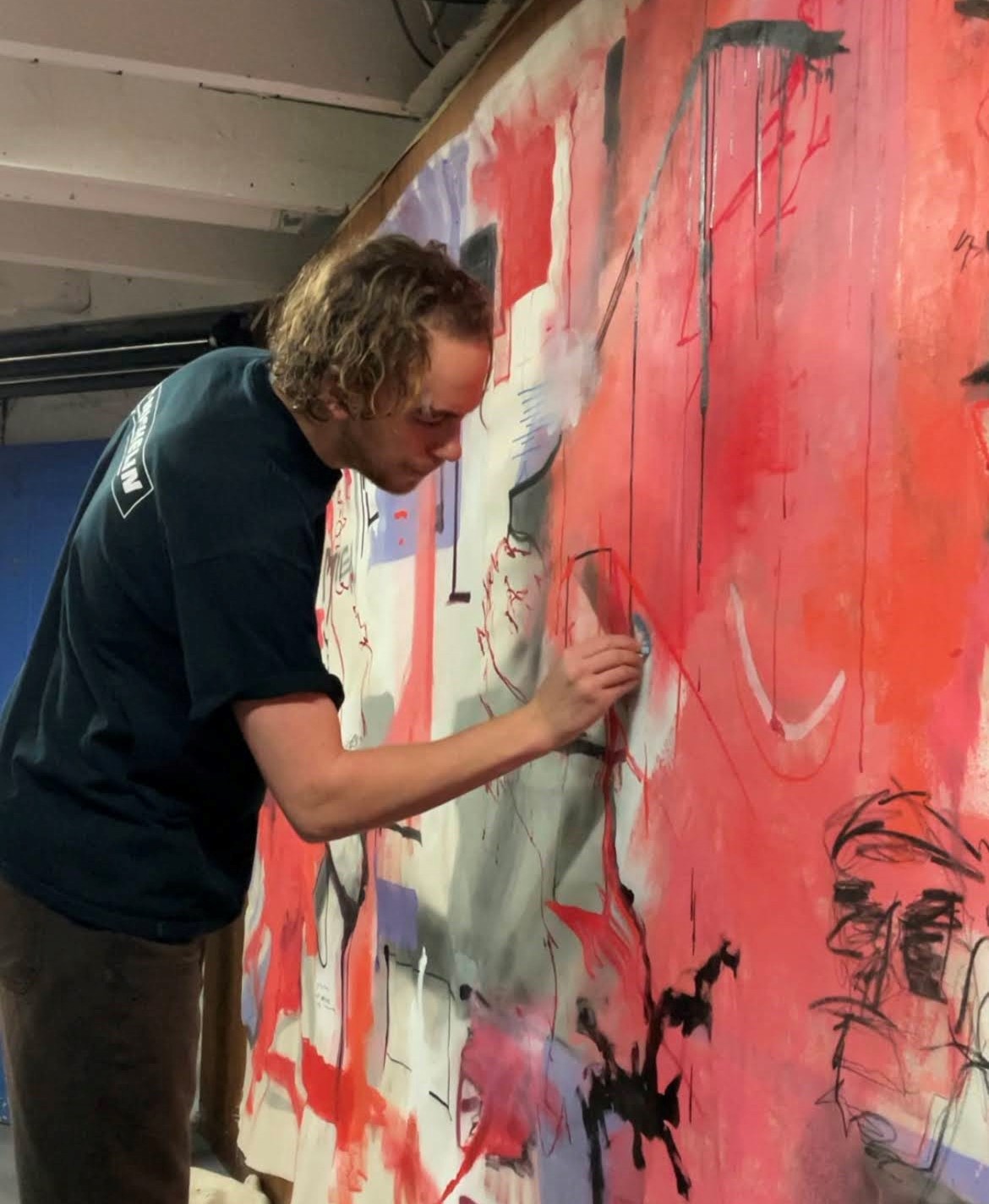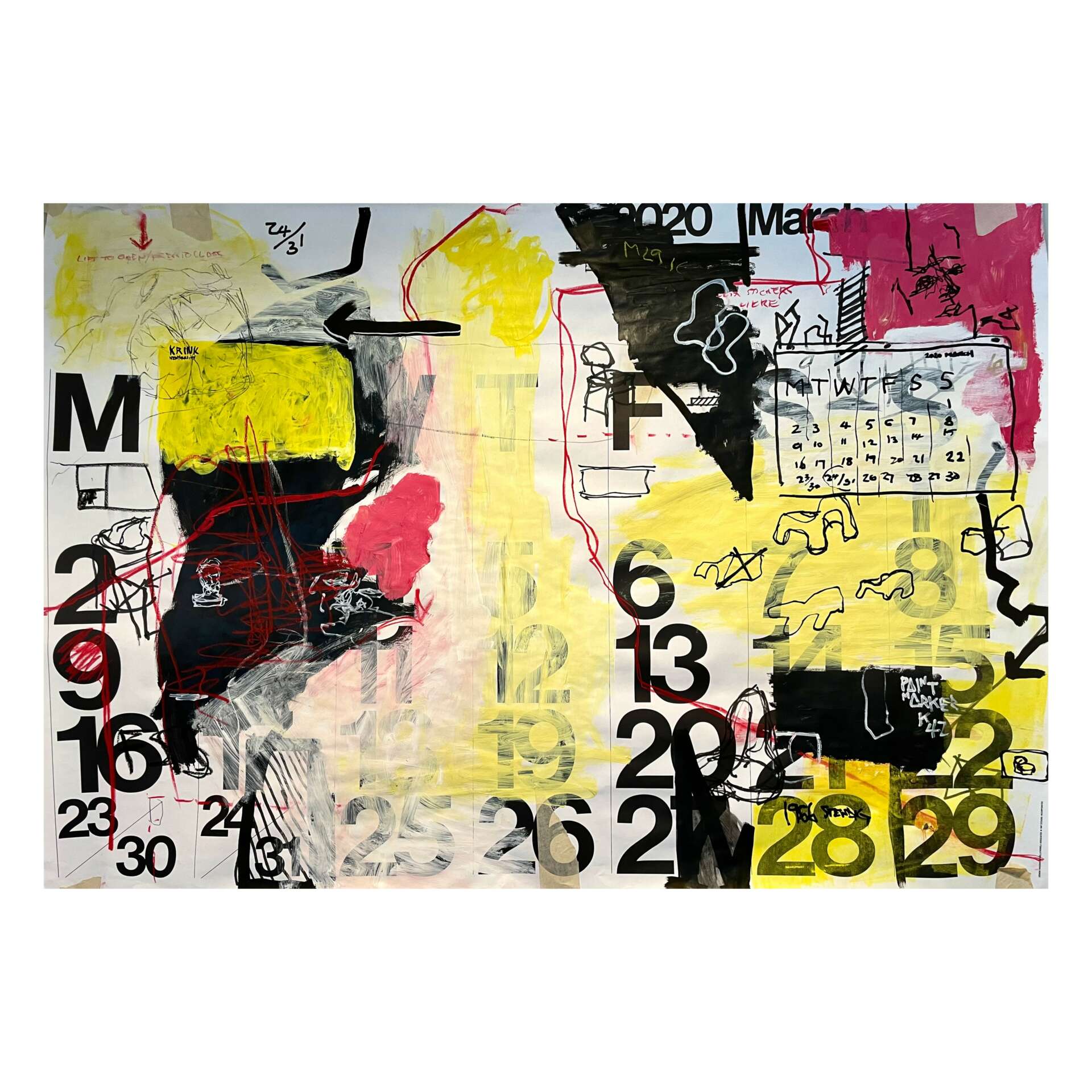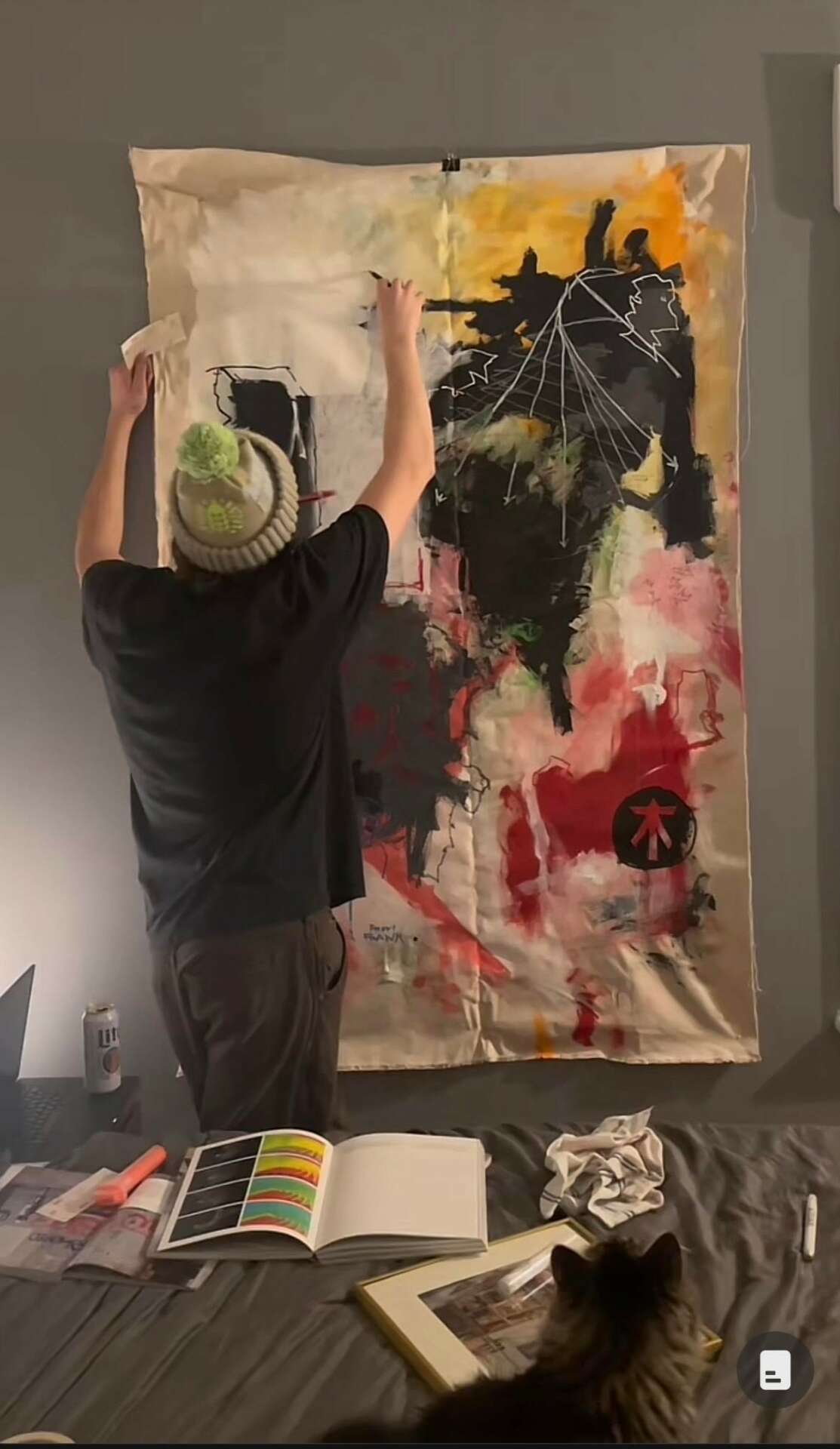Alright – so today we’ve got the honor of introducing you to Aidan Dillon. We think you’ll enjoy our conversation, we’ve shared it below.
Aidan, looking forward to hearing all of your stories today. Learning the craft is often a unique journey from every creative – we’d love to hear about your journey and if knowing what you know now, you would have done anything differently to speed up the learning process.
I have no professional training in art. The only classes I’ve taken related to painting and fine art come from high school. Otherwise, everything I’ve learned has been self-taught and influenced from other aspects of my life, such as urban studies and landscape architecture. I would ever say my painting craft is impressive or noteworthy. I don’t do anything special regarding brushes and paints, rather I use cheap brushes and mediocre paints. I’ve always tended to put my focus on compositions, color, and narrative, and never want technique to be a primary factor in my work. Likewise, I utilize a range of techniques beyond just painting, such as screenprinting, spray paint, collage, and ink drawings to enhance my work.
I’ve always gravitated towards painting cheaply. Part of that is respectably not being able to afford nice materials. So many of my works over the years, and still today, are done on recycled papers, cardboard, MDF board, wood, and anything else I could use as a surface. Each material has its own character and qualities to it, giving unique life and meaning to the work that has been painted on it. I also never cared about the quality of paint or ink that I used (that has slightly changed now, but I still hold the same mindset). I always try to embrace that it’s not about the quality of materials used but the idea that matters. I’ll use anything from house paint to white out markers, sharpies, and refill inks found around offices. I’ve started gravitating towards slightly nicer materials, but I still follow Sol Lewitt’s ideology that “Banal ideas cannot be rescued by beautiful execution.”
Over the years, I’ve become much more confident in executing and showcasing my style. My work five years ago is almost unrecognizable to the work I do now. I heavily believe in working in quantity as opposed to quality. Not that I don’t give every piece the quality time and attention it deserves, but I understand that not every piece I do will be what I want. There are more pieces that never see the light of day than pieces that I publicly present, and I’ve come to appreciate and understand that that is necessary for creating successful work. But still, when I finish a painting, I’m happy with it for maybe a week, two weeks, or a month, but eventually, I know that I can make something better. It’s part of the process in growing as a painter, and I feel that I will spend my whole life chasing the idea that “this next one will be better.” What I can look forward to is knowing that in another five years, my work will likely take a completely different look and feel.
Awesome – so before we get into the rest of our questions, can you briefly introduce yourself to our readers.
My name is Aidan Dillon. I am 23 years old and currently live in Minneapolis. I’ve been painting for about 5 years. I graduated from the University of Minnesota in 2022 with a degree in Urban Studies and minor in Landscape Architecture.
Six years ago, I had a teacher push me take AP Studio art. I liked art but felt I was only okay at it, so was surprised when my teacher advocated highly for me to take the class. I struggled the first few months, even going as far as attempting to drop out of the class. My teacher wouldn’t let me do so, and instead gave me some slack on missing and late assignments. Towards the end of that first semester, I had finally made a click. I had finally created something that felt like it came naturally, confidently, and most importantly felt like me. From there, I began diving deeper into what my style meant to me, mainly exploring composition and color. My growth increased drastically during COVID, being able to devote far more time and energy into my work. My influences broadened, my mediums varied, my techniques changed. I was creating paintings that looked nothing like my previous work, but still held principles of what I understood and practiced relating to composition and color. My paintings started to have more narrative, incorporating symbolism, sketches, collage, mostly from personal experiences. Around this time (2020-2021), I was struggling with mental health and stepped away from Division 1 swimming at the University of Minnesota. This again pivoted me towards having more focus on the creative aspects of my life. Since then, I’ve become proud of what I’ve established and created in five years on my own. I show pieces in both my hometown of Evanston, IL, and the Twin-Cities, MN. I’ve had numerous group and solo shows, sold dozens of paintings, had curation experience, and continue to network and grow a following in these two areas. I’m also proud of being able to do this with no studio, always working wherever I’m living. Since COVID, I’ve lived in four different places, all of which have their own unique size constraints. This past year I’ve been working on six foot paintings in my bedroom, with only about a foot of room between the canvas and where I sleep. It’s not ideal, but it never stops me from creating.

Let’s talk about resilience next – do you have a story you can share with us?
I think going back to what I mentioned earlier about living in so many places over the last four years and trying to make that work with the scale of paintings that I produced. During COVID, being stuck at my parents house in Evanston, I did all of my paintings in a corner of our basement. When I moved back to Minneapolis mid-summer of 2020, I had a small landing on the second floor that I used as my primary studio, so essentially just a hallway outside my room. in 2021, I moved into a house with 7 roommates, with a bedroom only large enough to hold my bed and a desk. I used the basement, which unsurprisingly for a house built in the 1800’s, was dark, small, occupied by strange objects, cold, and didn’t always smell great. The positives of that basement were that I was able to create my largest painting to date, a 6 foot x 12 foot work on canvas titled blood visions, primarily influenced by an experience getting robbed. I currently share a pretty small apartment with two other roommates, so everything I’ve done in the last year has been within my room. The size constraints pushed me to try new mediums and smaller works. Instead of working on large canvases, I spent most of the fall working on paper. Those pieces were done on old blueprints, large historical documents, and other strange vintage papers I could find at antique stores. Eventually, I caved, and I’m back to working large scale just inches away from my bed. It’s not the smartest, and not the most convenient, but I have a will to paint, so in the end, I will paint by any means. There will always be things that feel limiting or constraining, but I have always found ways around this. I think this also speaks to my early career when I couldn’t afford to work on canvas, so would work on large pieces of cardboard left out on the street after common move-in weekends. I try to use these constraints in a way as “opportunities” to create something I normally wouldn’t. Lastly, I think some of these principles can tie into things such as mental health and other personal issues that often feel burdening on artists. I think about a quote almost daily from Jeff Tweedy, one of my favorite musicians and a personal inspiration of mine. In his book “Let’s Go (so we can get back),” He describes that “artists create in spite of suffering, not because of suffering.” Artists and creatives do not create things because of the challenges they face, whatever that may be, but they create in spite of what may hold them back. I’ve had many challenging days, weeks, and months this last year, yet thinking about this reminds me that I create because I can, and want to, and get to.

For you, what’s the most rewarding aspect of being a creative?
I get to create whatever I want, whenever I want, and nobody can tell me otherwise. I can create something that has never been made before. That’s a pretty great feeling, and too often I forget the liberties that come with being an artist. My mantra is that I do not create for anybody else, and I do not do this as a way of primary income. I do not do this for any reason other than I want to do it, it challenges me, and it makes me happy. I will always stand by that. It has been and always will be the reason behind every new painting I do. It’s actually part of the reason I haven’t been compelled to do commissions, because I feel that I am no longer creating something for the purpose of myself, but rather for outside influence. I know that can come off as selfish, but I think it is important to reflect on why you do something. I don’t want to feel that I am painting for reasons other than what makes me fulfilled and happy. If painting for me ever got to the point where I was doing it for a reason outside of my own personal interest, I fear that the relationship wouldn’t be the same.
Now, even with that being said, I get great joy in passing on my paintings to new owners. Having people make connections and feel emotions towards my paintings is one of the most rewarding things I can get from painting. I try to create something that responds uniquely to every viewer. Each person that sees my work is going to see it and look at it differently, feel something different, react to it differently, feel different emotions, etc. Oftentimes, people see and feel things in my paintings that I could have never imagined before. The feeling of someone having an emotional connection and relationship with a painting is incredible. It’s unique because I can never have the same relationship with a painting as that of the viewer, so their perspective is always important to me. Sometimes, my most popular paintings are the ones that I like the least. In my most recent show, I had a work (titled “hello my name is lasko”) sell within the first hour. Of all my paintings in the show, it was my least favorite! But knowing that someone feels so compelled to a piece, regardless of my interpretation of it, will always inspire me as an artist. While I paint mainly for myself, I understand the connections that people have towards my work. It is touching to know that people care and support the work I do. It’s easy to look down on yourself as an artist, but time and time again, I am beyond thankful for the support that I have been shown.
Lastly, it is always rewarding as an artist to know that your work can make an impact on somebody. Regardless of what that may be, there is a special connection between humans and art, and being able to produce something that can build that relationship for others is extremely rewarding. I can feel that my duty as an artist is fulfilled if even just one person decides to go out of their comfort zone and create any medium of art because of something I created. 


Contact Info:
- Website: aidandillon.com
- Instagram: adillonj_art
Image Credits
n/a (taken by me)

